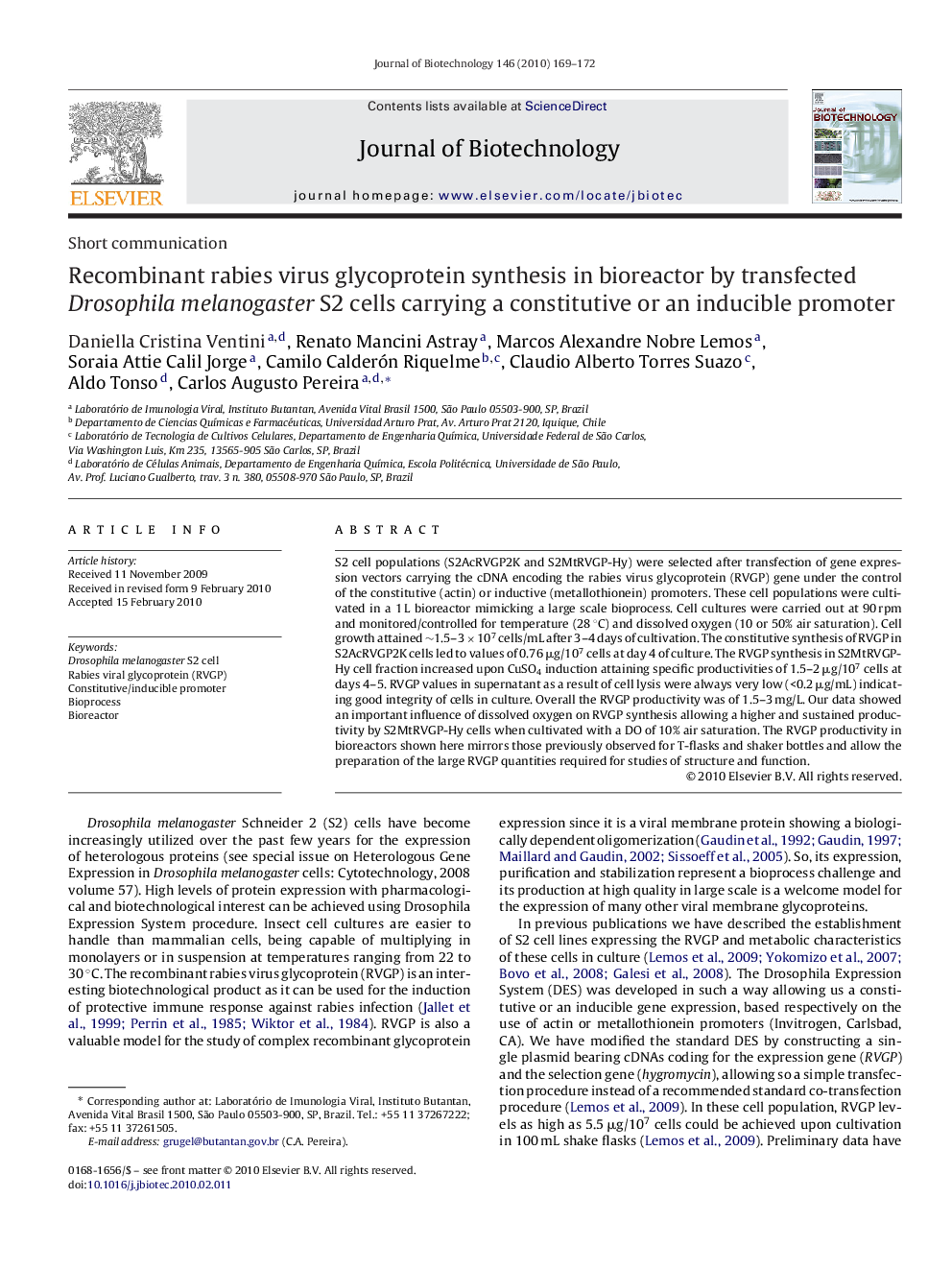| Article ID | Journal | Published Year | Pages | File Type |
|---|---|---|---|---|
| 24385 | Journal of Biotechnology | 2010 | 4 Pages |
S2 cell populations (S2AcRVGP2K and S2MtRVGP-Hy) were selected after transfection of gene expression vectors carrying the cDNA encoding the rabies virus glycoprotein (RVGP) gene under the control of the constitutive (actin) or inductive (metallothionein) promoters. These cell populations were cultivated in a 1 L bioreactor mimicking a large scale bioprocess. Cell cultures were carried out at 90 rpm and monitored/controlled for temperature (28 °C) and dissolved oxygen (10 or 50% air saturation). Cell growth attained ∼1.5–3 × 107 cells/mL after 3–4 days of cultivation. The constitutive synthesis of RVGP in S2AcRVGP2K cells led to values of 0.76 μg/107 cells at day 4 of culture. The RVGP synthesis in S2MtRVGP-Hy cell fraction increased upon CuSO4 induction attaining specific productivities of 1.5–2 μg/107 cells at days 4–5. RVGP values in supernatant as a result of cell lysis were always very low (<0.2 μg/mL) indicating good integrity of cells in culture. Overall the RVGP productivity was of 1.5–3 mg/L. Our data showed an important influence of dissolved oxygen on RVGP synthesis allowing a higher and sustained productivity by S2MtRVGP-Hy cells when cultivated with a DO of 10% air saturation. The RVGP productivity in bioreactors shown here mirrors those previously observed for T-flasks and shaker bottles and allow the preparation of the large RVGP quantities required for studies of structure and function.
